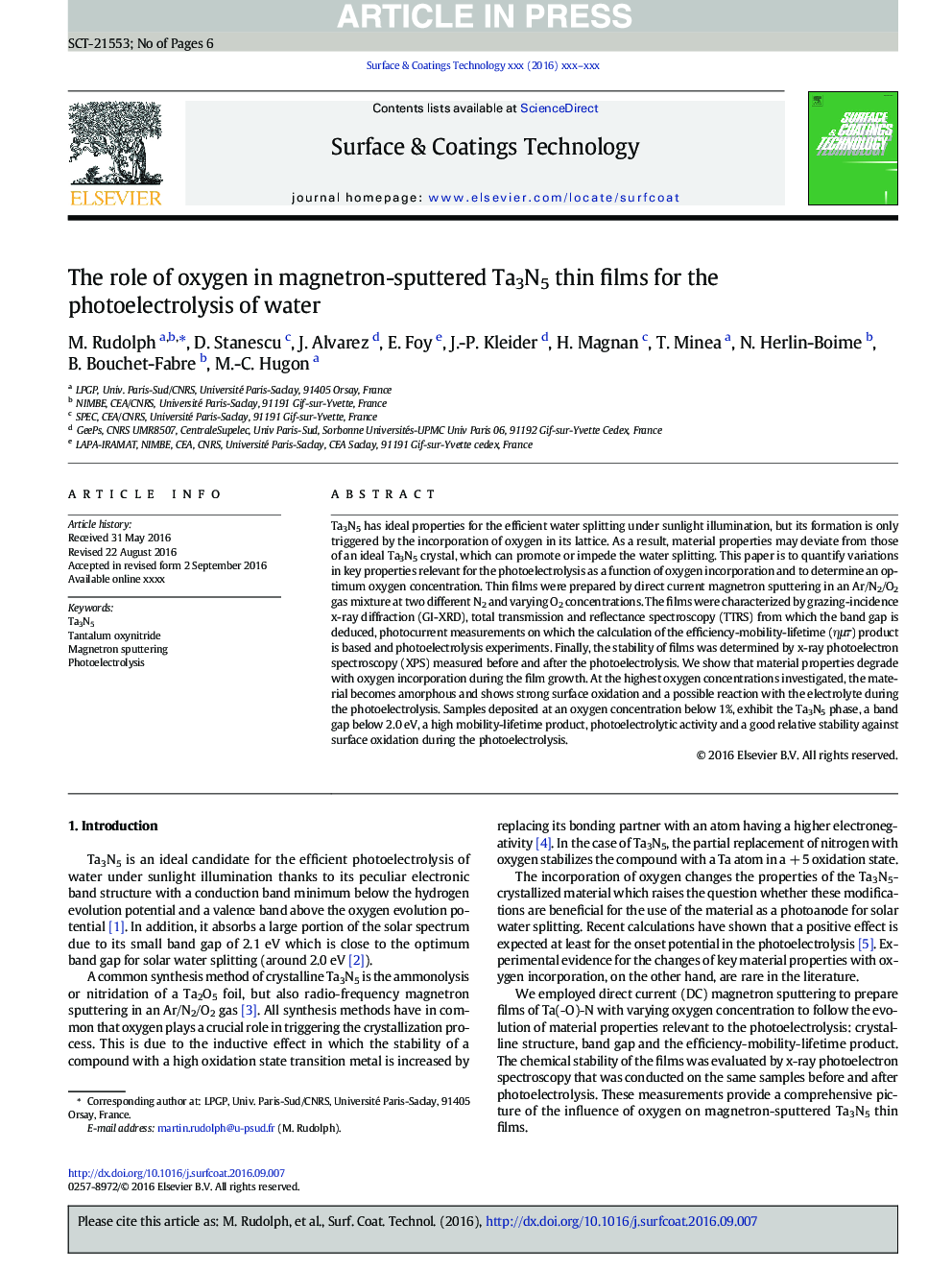| Article ID | Journal | Published Year | Pages | File Type |
|---|---|---|---|---|
| 5465053 | Surface and Coatings Technology | 2017 | 6 Pages |
Abstract
Ta3N5 has ideal properties for the efficient water splitting under sunlight illumination, but its formation is only triggered by the incorporation of oxygen in its lattice. As a result, material properties may deviate from those of an ideal Ta3N5 crystal, which can promote or impede the water splitting. This paper is to quantify variations in key properties relevant for the photoelectrolysis as a function of oxygen incorporation and to determine an optimum oxygen concentration. Thin films were prepared by direct current magnetron sputtering in an Ar/N2/O2 gas mixture at two different N2 and varying O2 concentrations. The films were characterized by grazing-incidence x-ray diffraction (GI-XRD), total transmission and reflectance spectroscopy (TTRS) from which the band gap is deduced, photocurrent measurements on which the calculation of the efficiency-mobility-lifetime (ημÏ) product is based and photoelectrolysis experiments. Finally, the stability of films was determined by x-ray photoelectron spectroscopy (XPS) measured before and after the photoelectrolysis. We show that material properties degrade with oxygen incorporation during the film growth. At the highest oxygen concentrations investigated, the material becomes amorphous and shows strong surface oxidation and a possible reaction with the electrolyte during the photoelectrolysis. Samples deposited at an oxygen concentration below 1%, exhibit the Ta3N5 phase, a band gap below 2.0 eV, a high mobility-lifetime product, photoelectrolytic activity and a good relative stability against surface oxidation during the photoelectrolysis.
Related Topics
Physical Sciences and Engineering
Materials Science
Nanotechnology
Authors
M. Rudolph, D. Stanescu, J. Alvarez, E. Foy, J.-P. Kleider, H. Magnan, T. Minea, N. Herlin-Boime, B. Bouchet-Fabre, M.-C. Hugon,
